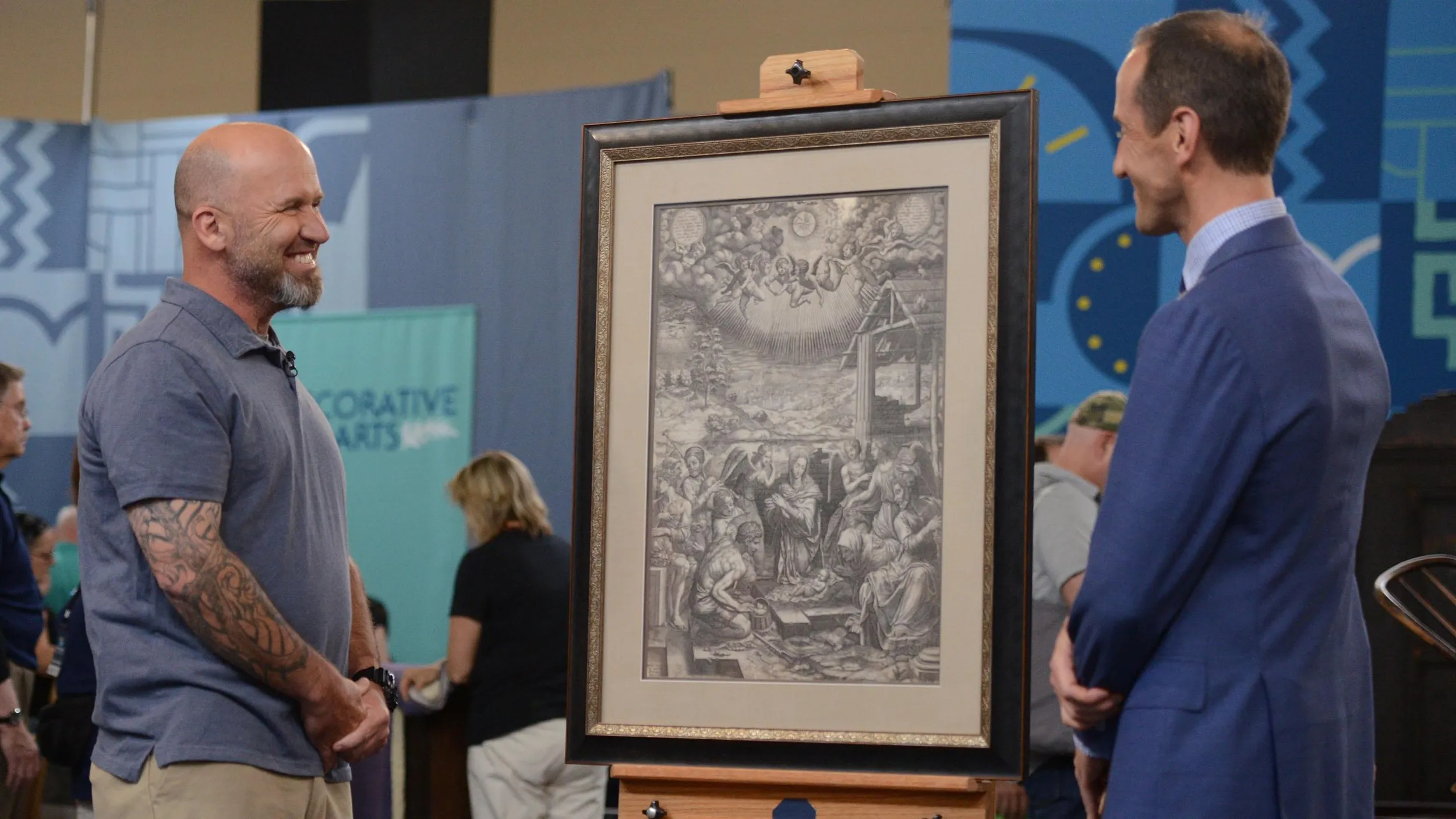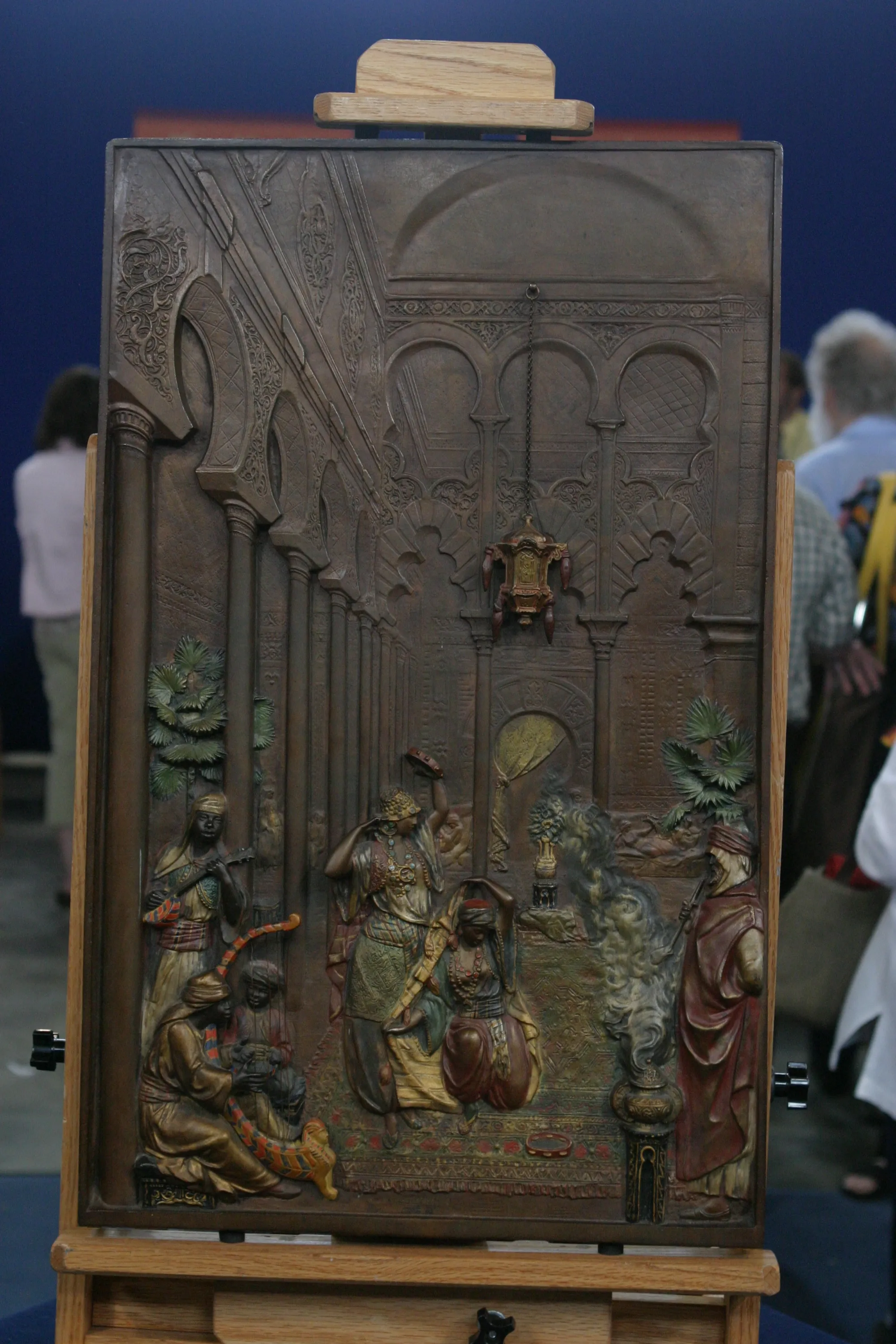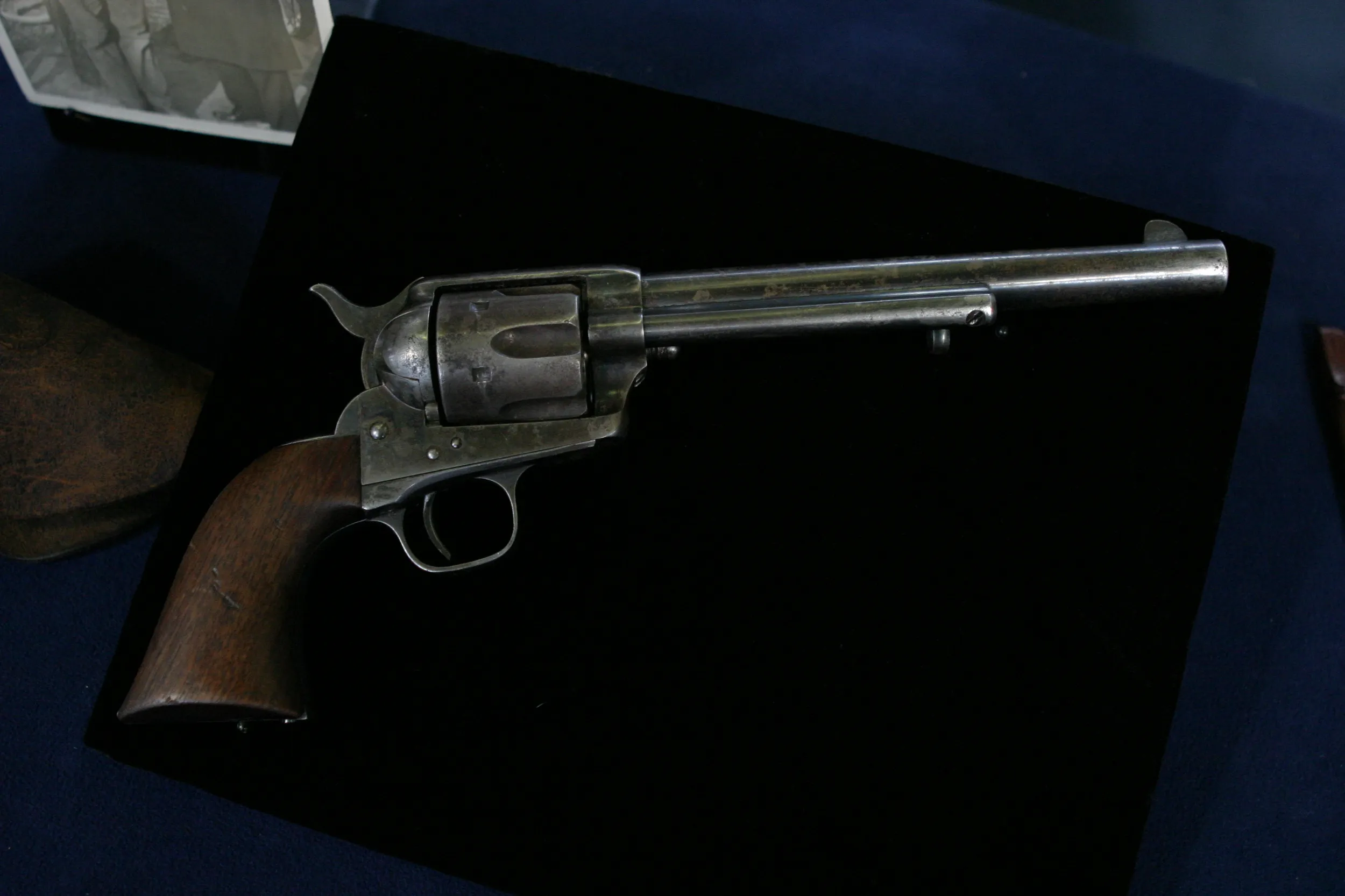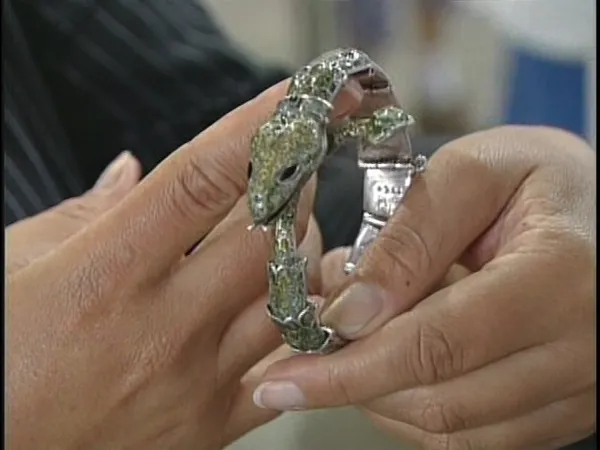GUEST: I'm hoping you can tell me what it is. I remember it first when I was eight or nine in the mid-'40s, in my grandfather's home, in his library. His father, my great-grandfather, had a brother who was in the Royal Navy. I suspect that his brother purchased this somewhere in the Far East. I'm only guessing. That's what I know about it. And I wonder what it is. I have had people, just purely informally, tell me they guessed that the green is jade, and gold trim. But purely a guess-- it's never been appraised.
APPRAISER: Well, what you've brought to ANTIQUES ROADSHOW today is a very nice example of a German... decorative object, really. So it looks kind of like a cup, but it really didn't have a function. So it's German, not Asian. And the material is what we're just going to call gilt metal. It could be silver-gilt or gilt-bronze, and/or a combination of both. And then the stone is jasper.
GUEST: Oh!
APPRAISER: Not jade, it's jasper. This was actually made by hand in the 17th century.
GUEST: Ooh! (laughing) I'm surprised.
APPRAISER: Well, it's a very, very nice example of what the German craftspeople in that time were doing to make very nice decorative objects that very wealthy people would display to communicate their taste level and their wealth. And then also they would give them to other people of their socioeconomic status as gifts. And the style that we have here, it's Mannerist in style. And Mannerism is a style of art in Europe that started in Italy in the late Renaissance, which is the early 16th century. But in Northern Europe, it lasted into the 17th century. And this Mannerist style does precede the Baroque style of art in European decorative arts. So what we have from top to bottom, we have a rim here that's chased with floral and foliate decoration. Very fine technique to the turning of the stone. And overall, the amount of work that went into this then translates into its value at the time, and the value today. So I looked this over very carefully to see if it was marked by a known maker, and it is not. If it was marked by a known maker, we would be looking at something quite a bit more valuable. In a sale of European decorative works of art, I would expect this to realize at auction between $7,000 and $10,000.
GUEST: (laughing) I'm shocked.








